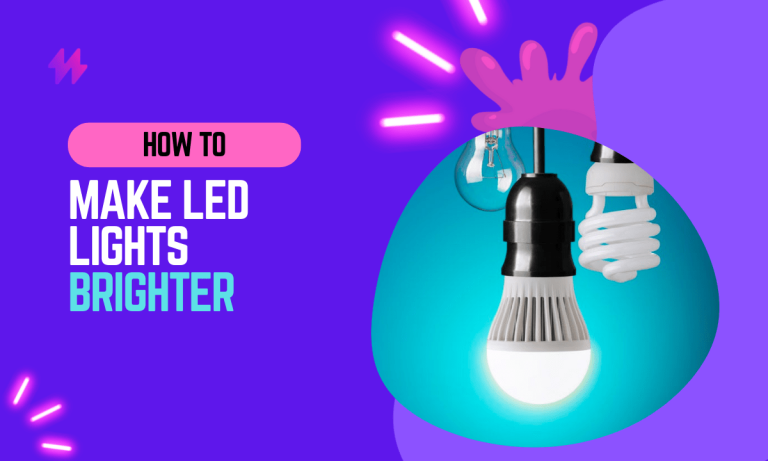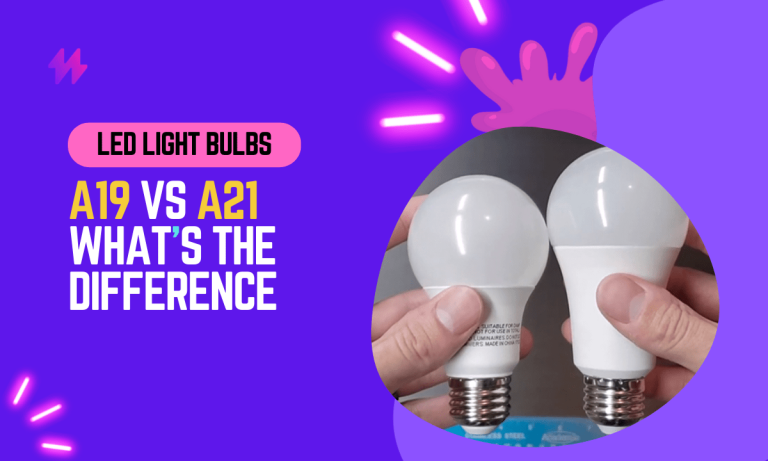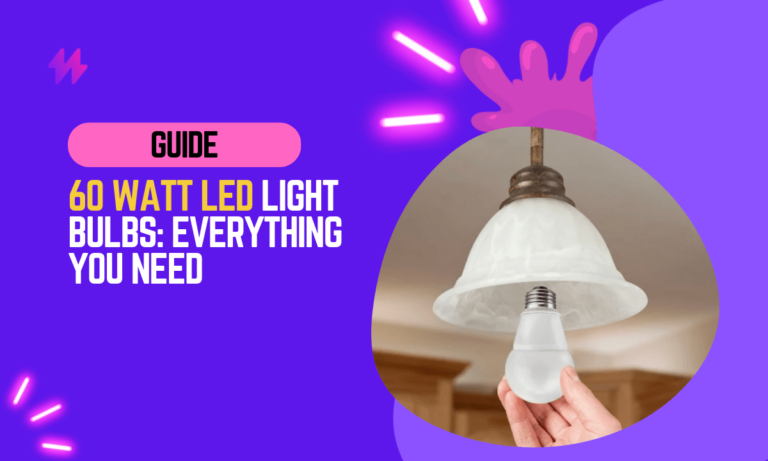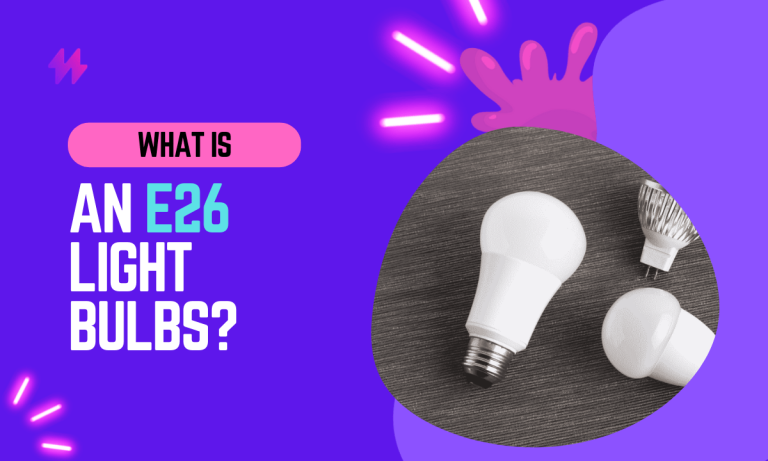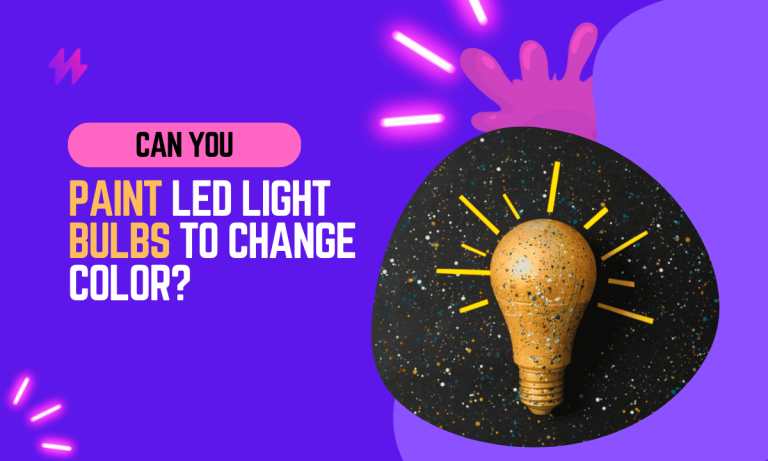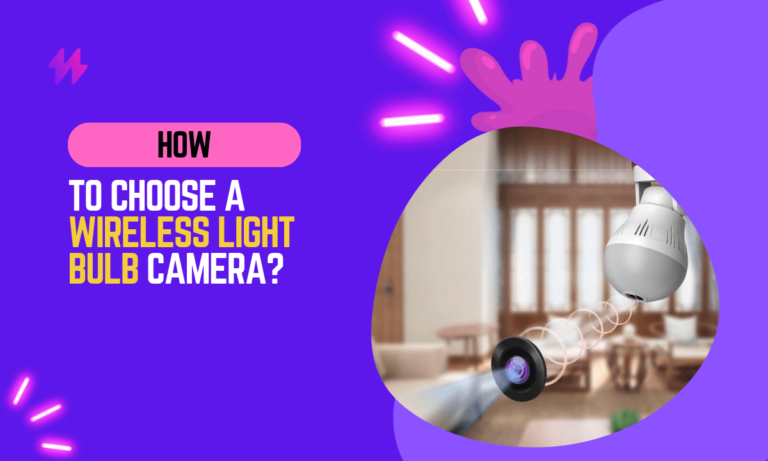How To Read Bulb Base Size and Type?
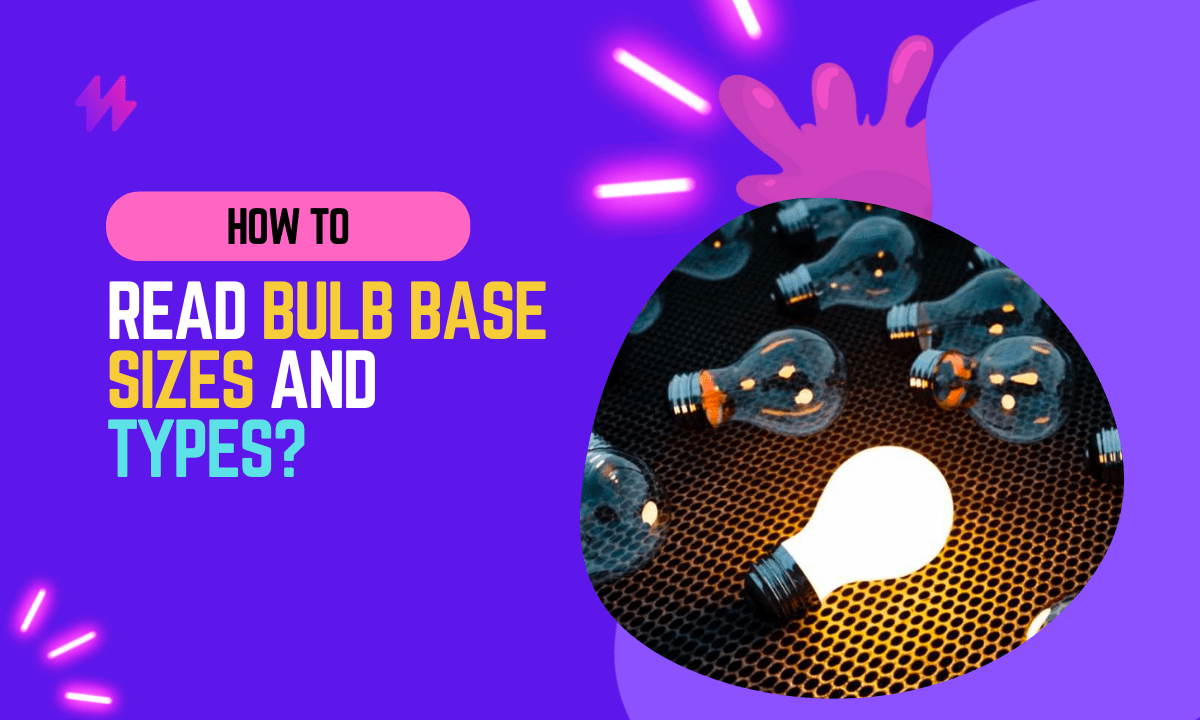
Understanding bulb base size and type is an important aspect of selecting the right light bulbs for your home or business. Whether you’re trying to replace a burnt-out bulb or simply looking to upgrade to a more energy-efficient option, it’s important to know the correct base size and type to ensure a proper fit and function.
In this blog, we’ll cover the basics of bulb base sizes and types, as well as provide tips on how to read and interpret the information found on bulb packaging and labeling.
Understanding Bulb Base Type & Sizes
Bulb base sizes refer to the diameter of the base (the part that connects to the light fixture) and are measured in millimeters (mm) or inches. The most common bulb base sizes include:
Edison Screw (ES) Base
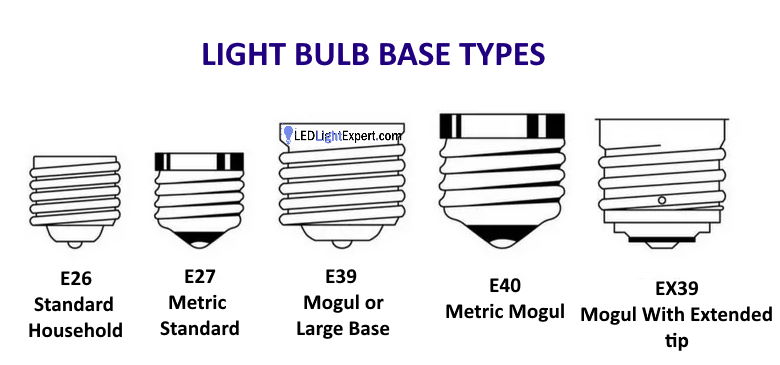
E26 (medium) base: The E26 base is one of the most common bulb bases used in residential and commercial lighting fixtures. It has a diameter of 26 millimeters and a medium screw base. The E26 bulbs are typically used for general-purpose lighting, such as table lamps, floor lamps, pendant lights, and many types of light bulbs, including incandescent, halogen, LED, and CFL bulbs.
E27 (medium) base: Similar to the E26 base, the E27 base is widely used in many countries around the world, including Europe, Asia, and Australia. It also has a diameter of 26 millimeters but is slightly different in terms of the screw thread pitch. The E27 base is compatible with the same range of bulbs as the E26 base and is commonly found in various lighting fixtures like table lamps, ceiling lights, and wall sconces.
E12 (candelabra) base: The E12 base, also known as the candelabra base, has a smaller diameter of 12 millimeters. It is commonly used for decorative lightings, such as chandeliers, wall sconces, and small accent lamps. The E12 light bulb base is most often associated with candelabra bulbs, which are characterized by their flame-shaped or torpedo-shaped design. These bulbs are commonly found in decorative fixtures that require a more aesthetically pleasing appearance.
E14 (candelabra) base: The E14 base is similar to the E12 base but is more commonly used in Europe and other international markets. It has a diameter of 14 millimeters and is compatible with candelabra bulbs designed for decorative lighting applications. The E14 base is often found in chandeliers, wall sconces, and pendant lights, adding a touch of elegance and charm to the surroundings.
Bayonet Cap (BC) Base
B22 (medium) base: The B22 base, also known as the bayonet cap base, is widely used in the United Kingdom, Australia, and various other countries. It features a bayonet-style connection where the bulb is inserted and twisted to lock it into place. The B22 base has a diameter of 22 millimeters and is commonly used for general-purpose lighting fixtures such as ceiling lights, wall sconces, and table lamps. It is compatible with a variety of bulb types, including incandescent, halogen, LED, and CFL bulbs.
B15 (candelabra) base: The B15 base, also known as the small bayonet cap base, is similar to the B22 base but has a smaller diameter of 15 millimeters. It is commonly used in Europe and some other regions for decorative lighting fixtures that require smaller bulbs. The B15 base is often found in chandeliers, wall sconces, and small accent lamps, providing a candelabra-style connection for bulbs specifically designed for decorative purposes.
GU Base
GU10 base: The GU10 base is a popular type of bulb base used for spotlighting and task lighting applications. It features two straight pins that are spaced 10 millimeters apart. The GU10 base is primarily used with halogen, LED, or CFL bulbs designed for directional lighting. It is commonly found in track lighting systems, recessed ceiling fixtures, and pendant lights. The GU10 base allows for easy installation and removal of bulbs, providing a secure connection for precise beam control and focused illumination.
GU5.3 base: The GU5.3 base, also known as the MR16 base, is another type of GU base used for low-voltage lighting. It has two straight pins that are spaced 5.3 millimeters apart. The GU5.3 base is commonly used with halogen or LED bulbs, often in landscape lighting, track lighting, and display lighting applications. It offers a reliable connection and is designed for fixtures that require smaller, low-voltage bulbs.
Bi-pin Base
G4 base: The G4 base is a bi-pin base that is commonly used in low-voltage halogen bulbs. It features two thin pins that are spaced 4 millimeters apart. The G4 base is often found in compact fixtures such as desk lamps, under-cabinet lighting, and landscape lighting systems. It provides a secure connection and is known for its small size, making it suitable for applications where space is limited.
G9 base: The G9 base is another type of bi-pin base used primarily with halogen bulbs. It has two thicker pins that are spaced 9 millimeters apart. The G9 base is commonly used in compact fixtures, including wall sconces, pendant lights, and bathroom vanity lighting. It offers a convenient twist-and-lock mechanism for easy installation and removal of bulbs.
Also read: What Is the Brightest Light Bulb?
Factors to Consider When Choosing Bulb Base Size and Type

When selecting the right bulb base size and type for your lighting fixtures, it’s important to consider several factors that can affect compatibility, functionality, and overall lighting performance. Here are some key factors to keep in mind:
Fixture Compatibility
- Determine the type of base your fixture requires: Different fixtures are designed to accommodate specific bulb bases. Check the manufacturer’s guidelines or the existing bulb base in the fixture to ensure compatibility.
- Consider voltage requirements: Some fixtures may be designed for low-voltage bulbs with specialized bases. Make sure the base size and voltage requirements of the bulb match those of the fixture to ensure proper functioning and avoid damage.
Wattage and voltage requirements
- Check the wattage limitations: Each fixture has a recommended maximum wattage. Ensure that the bulb base you choose can support the wattage required for your lighting needs without exceeding the fixture’s specifications.
- Consider voltage compatibility: Determine whether your fixture operates on line voltage (120V or 240V) or low voltage (12V or 24V). Choose a bulb base that corresponds to the fixture’s voltage to ensure compatibility and optimal performance.
Desired light output and bulb type:
- Determine the desired brightness: Different bulb types and bases can produce varying levels of brightness. Consider the lumen output or wattage equivalency of the bulbs to ensure they provide the desired amount of light for your space.
- Choose the appropriate bulb type: Consider the specific lighting needs of your space, such as warm or cool lighting, dimmable options, or energy efficiency. LED, CFL, halogen, and incandescent bulbs are available in various base sizes, so select the type that aligns with your preferences and requirements.
Consider bulb replacement and availability:
- Assess the availability of bulb options: Some bulb base sizes may have a wider variety of bulb types and styles available compared to others. Check the market availability to ensure you can easily find replacement bulbs when needed.
- Consider long-term maintenance: If you have fixtures that require frequent bulb replacements, it may be beneficial to choose a base size and type that offers long-lasting and readily available options to minimize maintenance efforts.
You may also like to know: Can you Paint LED Light Bulbs?
Reading Bulb Packaging and Labeling
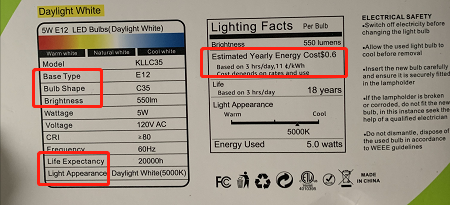
Now that we’ve covered the basics of bulb base sizes and types, let’s discuss how to read and interpret the information found on bulb packaging and labeling.
When shopping for bulbs, you’ll likely come across a variety of packaging and labeling options. Here’s what to look for:
Bulb size and type
Look for the base size and type listed on the packaging or label. This information is usually located near the top or bottom of the package and is typically listed in the form of a code, such as “E26” or “GU10.” Make sure to match the base size and type of the bulb you’re purchasing to the size and type of the light fixture’s socket.
Wattage
The wattage of a bulb refers to the amount of energy it uses. Higher-wattage bulbs use more energy and produce more light, while lower-wattage bulbs use less energy and produce less light. When selecting a bulb, it’s essential to choose one with the appropriate wattage for your needs. Remember that wattage is not directly related to brightness, as LED bulbs can produce the same amount of light as incandescent bulbs with a lower wattage.
Lumens
Lumens refer to the amount of light a bulb produces. The higher the lumen rating, the brighter the bulb. When selecting a bulb, consider the lumen output and choose one that will provide the desired level of brightness for your space. Discover our innovative Lumen to Watt Calculator, designed to effortlessly convert lumens into watts for your convenience.
Color temperature
The color temperature of a bulb refers to the appearance of the light it produces. Bulbs are typically available in three color temperature ranges: warm white (2700-3000K), cool white (3500-4100K), and daylight (5000-6500K). Warm white bulbs have a yellowish hue and are ideal for creating a cozy atmosphere, while cool white bulbs have a bluish tint and are great for tasks and workspaces. Daylight bulbs have a very white, almost blue hue and are ideal for spaces that need bright, natural light.
Dimmability
Some bulbs are designed to be dimmed, while others are not. If you want to be able to control the brightness of your bulbs, make sure to select ones that are dimmable. Keep in mind that not all dimmable bulbs are compatible with all dimmer switches, so be sure to check the packaging or label for compatibility information.
Life expectancy
The life expectancy of a bulb refers to the amount of time it is expected to last before burning out. LED bulbs typically have a much longer life expectancy than incandescent bulbs, making them a more energy-efficient and cost-effective option in the long run.
Energy efficiency
Many bulbs are labeled with an energy efficiency rating, such as ENERGY STAR qualified. These ratings indicate that the bulb meets certain energy efficiency standards and can help you save money on your energy bills.
Conclusion
In conclusion, understanding how to read bulb base size and type is essential for ensuring compatibility and optimal functionality of lighting fixtures in your home or office. Each bulb base has a specific designation that denotes its size and connection type, critical for matching the bulb with the appropriate lamp or fixture. Typically, the size and type of a bulb base are indicated by a letter or series of letters followed by a number. For example, the common “E26” base type stands for “Edison” with a diameter of 26 millimeters, widely used in North America. Being familiar with these designations allows consumers to make informed choices when replacing or upgrading their lighting solutions, ensuring that the bulbs will fit properly and function as intended.
Furthermore, navigating the myriad of bulb base types does not have to be a daunting task. With a basic understanding of the nomenclature used for these bases, such as E (Edison Screw), B (Bayonet), GU (Bi-pin), and others, individuals can effectively select the right bulbs to meet their lighting needs. This knowledge is particularly useful when dealing with specialty or imported fixtures that may require specific bulb types not commonly used in your region. Additionally, understanding bulb base sizes and types helps in maintaining the aesthetic consistency and efficiency of lighting systems, avoiding the hassle and cost of incompatible purchases. By taking the time to learn about bulb base specifications, consumers can enhance the functionality and longevity of their lighting fixtures, making well-informed decisions that save time and money while ensuring their spaces are beautifully and effectively illuminated.

